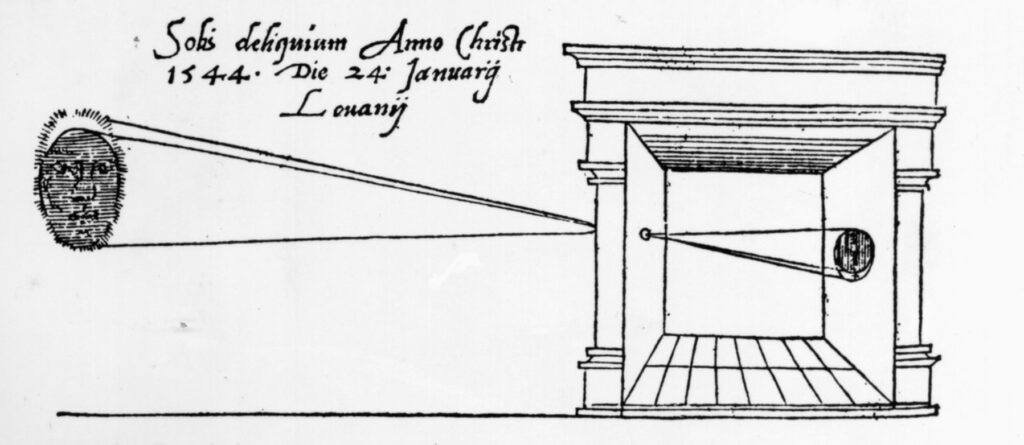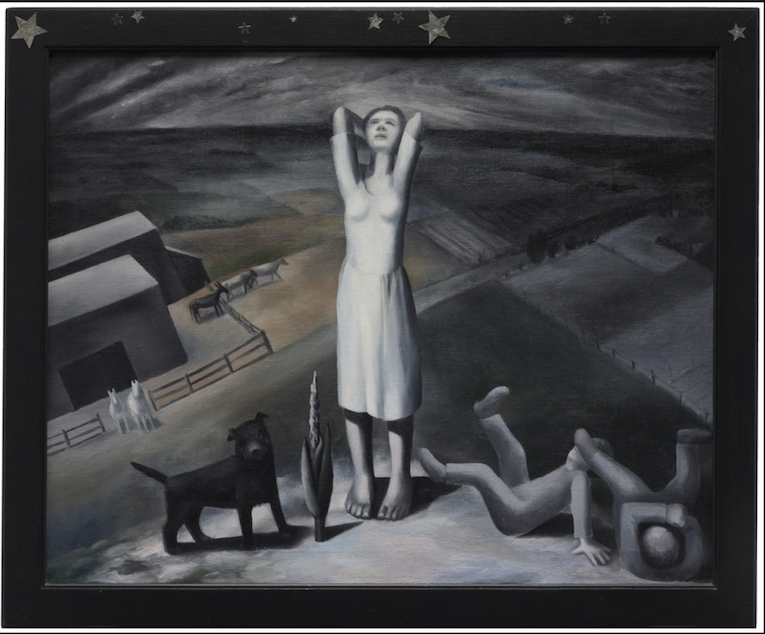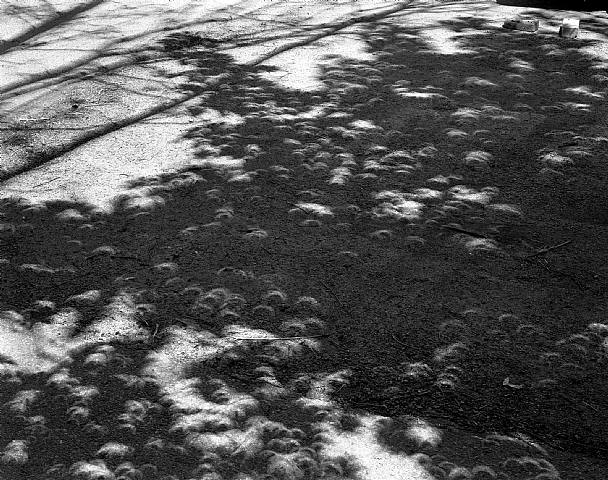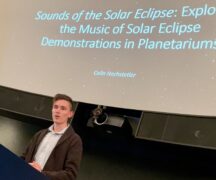By JULIE CARLE
BG Independent News
Drawings, paintings, sculptures and photographs have captured astronomical phenomena throughout time.
“Everyday things that we all might take for granted, such as the sun and the moon, become utterly surreal during an eclipse because we are suddenly reminded of how awesome they truly are,” Dr. Andrew Hershberger, an art history professor at Bowling Green State University, said during a recent Eclipse Speaker Series at the BGSU Planetarium.
“Astronomical phenomena are inspirational to artists,” he said, describing his own astronomical experience in 1989 while working at Sequoia National Park.
“The night sky was so intense. I could see the Milky Way so clearly that I thought I could reach up and touch it. It was utterly transformative,” Hershberger vividly recalled. “I think other artists have had similar experiences with the night sky and with the eclipses they have seen.”
One of the early artworks Hershberger shared during the talk was a drawing by Dutch scientist Rainer Gemma-Frisius that registers a Jan. 24, 1544, solar eclipse in a camera obscura, the predecessor to the photographic camera.

Since ancient times, people recognized it was unsafe to look at the sun during an eclipse. They would safely view eclipses through the Camera Obscura, which means “room that is dark.”
Hershberger explained that Camera Obscuras were room size, with a pinhole in one wall that projected the outside image onto the opposite wall inside the room. The drawing shows the eclipse as it nears totality and the inside image is of the moon nearly covering the sun projected upside-down and reversed from left to right.
The concept of the Camera Obscura is not only the beginnings of today’s cameras, but it is also the design for pinhole cameras, which can be easily made and used to watch the April 8 eclipse, he said.
One of the most recognized night sky paintings is Van Gogh’s “The Starry Night,” which he painted 100 years prior to Hershberger’s Sequoia moment.
“It’s a wonderful, magical painting. I think Van Gogh had an experience the night he saw the night sky in this way,” Hershberger said.

Ida O’Keeffe, the less well-known sister of artist Georgia O’Keeffe, recreated an astronomical phenomenon in her 1938 “Star Gazing in Texas.” The oil painting features a woman staring in awe at the wide Texas sky. A dog stands next to the woman’s feet, farm animals are in the background, and two people are on their backs looking up at that incredible scene, Hershberger said.
Norman Lewis, an artist from Harlem, was fascinated by the night sky. He painted at least four paintings entitled “Blue Moon,” Hershberger said. The 1960 artwork appears to show the moon reflected in water, “maybe the Harlem River,” he suggested. “It strikes me that he might often have been inspired by natural phenomena like the moon, stars and eclipses.”
Lewis was inspired by the writings and artwork of Russian artist Vasily Kandinsky who was one of the first abstract artists. Hired at the Bauhaus in 1922, Kandinsky was among the most important groups of artists and architects “in a hotbed of innovative thinking,” Hershberger said.

Kandinsky was interested in the moments that had a psychological and spiritual impact, “like when I looked up at the stars and was transformed in that moment. I think this is one of those kind of paintings” he said about Kandinsky’s “Composition 8.”
In addition to a possible eclipse in the upper left of the artwork, there appear to be lines that converge, “look to infinity, to the heavens, the stars and the eclipse,” Hershberger said.
Hershberger noted the similarity between Kandinsky’s “Composition 8’ and sculptor Alexander Calder’s mobile. Calder’s work is often suspended from the ceiling with wire and balanced so it will rotate, he said.

The mobile, titled “Yellow Moon,” denotes outer space, stars and orbiting planets. According to Hershberger, Calder was “very much inspired by the astronomical phenomena with the moon and sun represented in this abstract.”
Calder has been quoted as saying about the piece, “I felt there was no better model for me to choose than the universe.”
William and Frederick Langenheim took the first group of photographs of a solar eclipse in the U.S. on May 26, 1854, Hershberger said. The daguerreotype prints are “incredibly high-resolution,” he said, and developed over the fumes of mercury on a silver-coated copper plate
“The brothers were using this really complicated, beautiful, high-resolution process to make these images of the eclipse,” he said.
They made eight sequential photographs of the eclipse during the first total eclipse of the sun visible in North America since the invention of the daguerreotype in 1839. Only seven of the photographs remain, because, at totality, there was no available light, so nothing would have shown up on the plate, Hershberger explained.
The images also “seem odd,” he said, “because like all uncorrected daguerreotypes, the images are reversed laterally like a mirror.” The moon, which always shadows the sun from right to left during a solar eclipse (as seen in the northern hemisphere), appears to move from left to right.
Nam June Paik’s “Moon is the Oldest TV” has a similar look and feel to the Langenheim brothers’ eclipse series of daguerreotypes. However, the images are representations of the phases of the moon.
Paik, a television artist, lined up 12 televisions on pedestals. He added a magnet to the cathode ray tube to scramble the electronic signals and transform a point into a circle, semi-circle and crescent to look like the moon.
“Maybe this is Paik’s electromagnetic lunar eclipse,” Hershberger said.
One of Hershberger’s favorite eclipse-related paintings was painted by Alma Thomas, who was the first person to earn a fine arts degree from Howard University. The abstract artwork, which he loves, “shows a connection between representation and abstraction,” Hershberger said.
The bright colors of “The Eclipse” indicate her interest in the light spectrum, he said. The dark blue area is the moon, and the solar corona is the amazing spectrum of colors.
“I think this is an image of joy. I think she was profoundly touched by the eclipse,” Hershberger said.

He showed “Shadows During a Solar Eclipse,” a photograph by Abelardo Morell. The photograph is a reminder that there is a lot to see during an eclipse. In addition to looking up with the protection of eclipse safety glasses, he suggested spectators also look down.
“It is utterly magical seeing the crescent sun projected underneath the trees,” he said.


